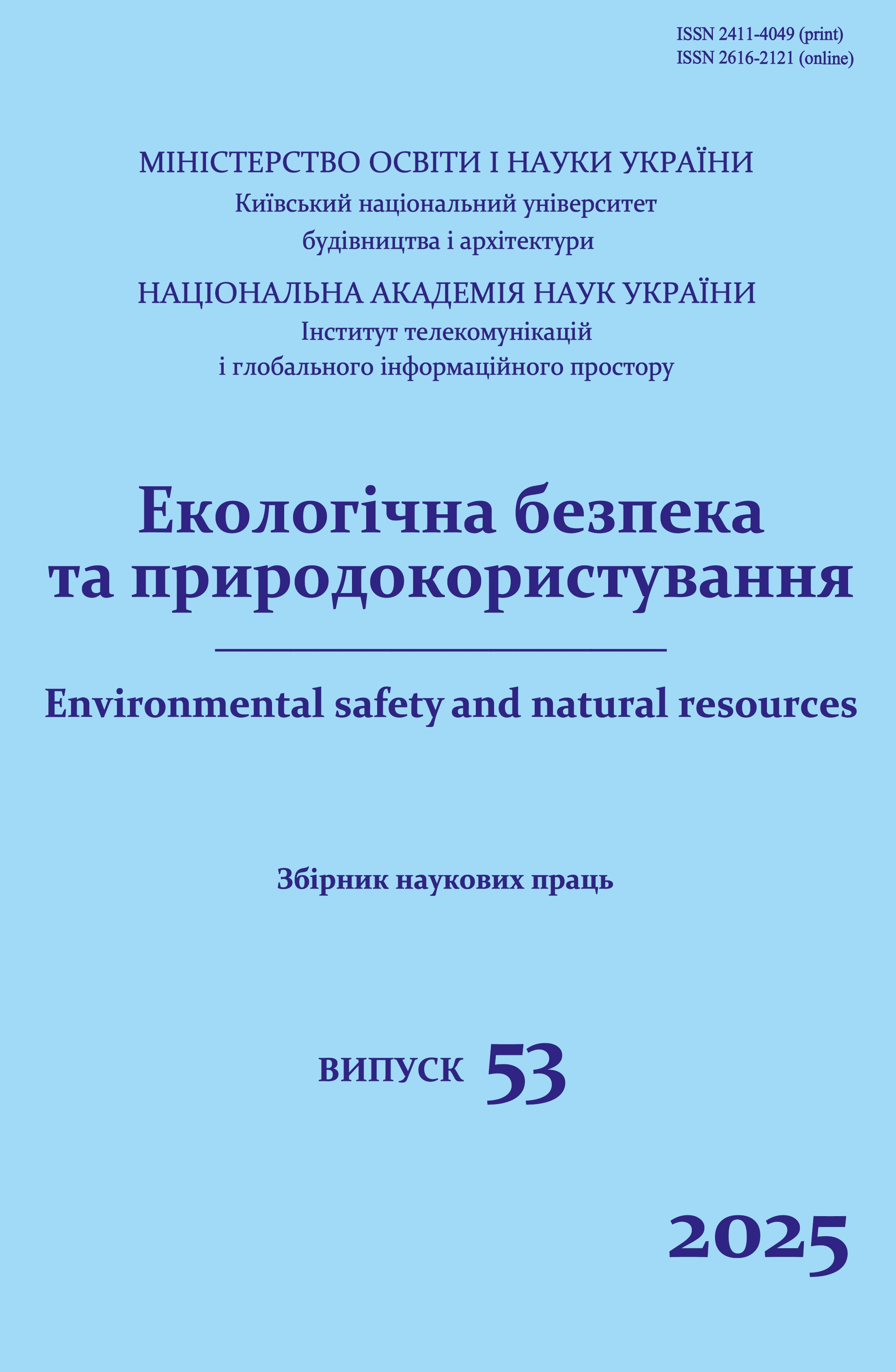Information technologies for environmental monitoring of landfills using remotely piloted aircraft
DOI:
https://doi.org/10.32347/2411-4049.2025.1.164-172Keywords:
information technology, mathematical model, control algorithms, remotely piloted aircraft, modeling accuracy, control system, satellite communication channelsAbstract
The paper proposes an analytical model for assessing the quality of performance of tasks of environmental monitoring of landfills by means of remotely piloted aircraft, the feature of which is taking into account the nature of anthropogenic impact on the state of the environment by improving the environmental monitoring equipment by optimizing the structure and parameters of the aircraft's onboard equipment.
An algorithm for controlling an environmental monitoring UAV has been developed, which, unlike existing ones, provides stabilization of the object on the research trajectory and provides increased accuracy in assessing the environmental safety of observation objects by using a communication channel with a remotely piloted aircraft. The purpose of this study is to increase the level of environmental safety of territories affected by landfills by improving technological processes and modernizing the onboard equipment of remotely piloted aircraft.
The object of the study is the process of using remotely piloted aircraft in systems for environmental monitoring of landfills. The object of the study is the process of using remotely piloted aircraft in systems for environmental monitoring of landfills.
The practical significance of the results obtained is that on the basis of the improved scientific and methodological apparatus of using remotely piloted aircraft in the system of environmental monitoring of landfills, it is possible to build ecological maps of a technogenic nature.
This will increase the reliability of the obtained data, determine the nature and properties of anthropogenic zones of influence. The use of remotely piloted aircraft for environmental monitoring allows you to quickly obtain data on the state of the environment, which is critically important for timely detection and response to environmental threats.
References
Trysnyuk, V., Trysnyuk, T., Okhariev, V., Shumeiko, V., & Nikitin, A. (2018). Cartographic Models of Dniester River Basin Probable Flooding. Сentrul Universitar Nord Din Bala Mare UTPRESS ISSN 1582-0548, 1, 61–67.
Grekov, L.D., Krasovsky, G.Y., & Trofimchuk, O.M. (2007). Space monitoring of land pollution by man-made dust. Kiev. Scientific thought.
Trysnyuk, V.M., Shumeiko, V.O., Kashchyshyn, O.V., Kurylo, A.V., & Smetanin, K.V. (2018). Monitoring the use and ecological condition of land using unmanned aerial vehicles. Modern information systems, 2 (4), 124-127 [in Ukrainian].
Shevchuk, O. V., & Azimov, O. T. (2021). Monitoring of the Zdolbunivka MSW landfill (Rivne region, Ukraine) using an unmanned aerial vehicle. In S. O. Dovhy (Ed.), Collective monograph based on the materials of the 20th International Scientific and Practical Conference “Modern information technologies for managing environmental safety, environmental management, and emergency measures: challenges of 2021” (Kyiv, October 4-8, 2021) (pp. 121–126). essay, LLC "Publishing House “Yuston” [in Ukrainian].
Trysnyuk, V.M., & Smetanin, K.V. (2018). Features of building a mobile environmental monitoring system for rapid determination of the state of the environment. In Proceedings of the scientific and technical conference "Modern directions of development of information and communication technologies and management tools", (Poltava-Baku-Kharkiv-Zhilina, April 26-27, 2018) (p. 93). Kharkiv: FOP Petrov V.V. [in Ukrainian].
Myrontsov, M.L. (2019). The problem of equivalence in inverse electrometry problems of oil and gas wells. In 18th International Conference Geoinformatics – Theoretical and Applied Aspects, Extended Abstracts.
Trofymchuk, O., Kalyukh, Y., & Hlebchuk, H. (2013). Mathematical and GIS-modeling of landslides in Kharkiv region of Ukraine. In Landslide Science and Practice: Spatial Analysis and Modelling (pp. 347-352). Springer, Berlin, Heidelberg.
Trofymchuk, O., Kreta, D., Myrontsov, M., Okhariev, V., Shumeiko, V., & Zagorodnia, S. (2015). Information Technology in Environmental Monitoring for Territorial System Ecological Assessment. Journal of Environmental Science and Engineering, A4, 79-84.
Trysnyuk, V.M., Okhariev, V.O., Trysnyuk, T.V., Zorina, O.V., Kurylo, A.V., Golovan, Y.V., Smetanin, K.V., & Radlowska, K.O. (2019). Improving the algorithm of satellite images landscape interpretation. In 18th International Conference Geoinformatics – Theoretical and Applied Aspects, Extended Abstracts.
Trofymchuk O., & Kaliukh I. (2013). Activation of landslides in the south of Ukraine under the action of natural seismic impacts (experimental and analytical studies). Journal of Environmental Science and Engineering, 2(2), 68-76.
Trysnyuk, V.M., & Smetanin, K.V. (2018). Development of a system of operational monitoring of territories using drones. In Materials of the II International Scientific and Practical Internet Conference “Science of the III Millennium: Searches, Problems, Development Prospects”, (Berdyansk, April 25-26, 2018) (pp. 187-189). Berdyansk: BDPU [in Ukrainian].
Trysnyuk V.M., Oharev, V.O., Trysnyuk, T.V., Smetanin, K.V., & Kurylo, A.V. (2018). Creation of a mobile environmental monitoring system. Environmental safety and balanced resource use, 2 (18), 120-128 [in Ukrainian].
Downloads
Published
How to Cite
Issue
Section
License
Copyright (c) 2025 Oleksandr Shevchuk

This work is licensed under a Creative Commons Attribution 4.0 International License.
The journal «Environmental safety and natural resources» works under Creative Commons Attribution 4.0 International (CC BY 4.0).
The licensing policy is compatible with the overwhelming majority of open access and archiving policies.

